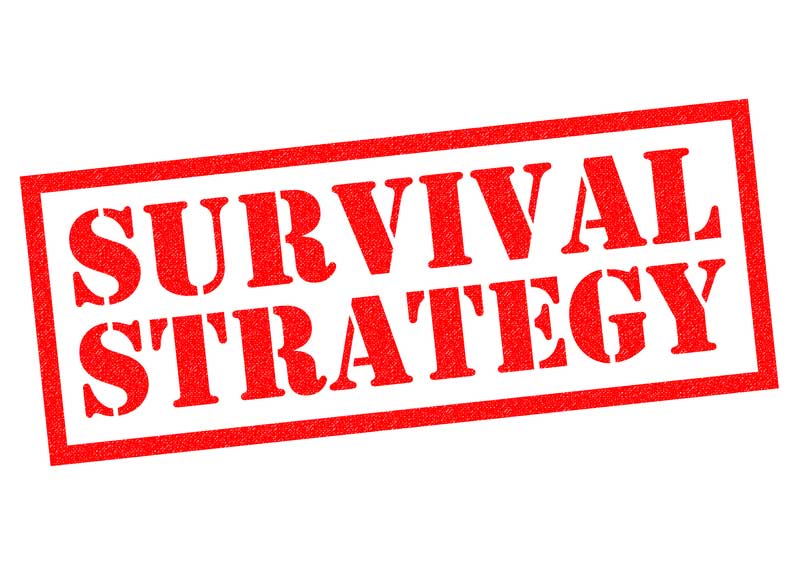COVID-19 has shut down businesses across the US and worldwide. In most US states non-essential businesses have been ordered or requested to close, employees have been told to work from home, and the general population has been told to stay home as much as possible. These are times no one has faced before and business owners are facing challenges no one could have anticipated or planned for. As a business owner you must plan carefully, think strategically, and above all else take action to ensure the survival of your business. Many people depend on you and your company; your employees, customers, and community all depend on small business owners like you.
Companies Providing Essential Services
Some companies are fortunate to provide essential services such as defense/military equipment and manufacturing, healthcare, essential construction services, financial services, etc. While the nature of their business requires these companies to stay open, which ensures their financial survival, they are facing unique challenges during this time that must be dealt with.
- Health and Safety of your Staff:
The health and safety of your staff should be of paramount concern. Since they are needed to work during this crisis it is critical to educate them in good health practices in the workplace and at home to minimize the risk of them becoming ill and potentially infecting others. If they suspect they are sick they should stay home and see a doctor if necessary. Ensure that your staff are taking this seriously. - Maintaining a Safe Workplace:
- Implement Work from Home where possible
- Provide hand sanitizers and hand washing soap/sinks
- Maintain Social Distancing at the workplace
- Encourage the staff to wipe down workstations and clean the facility
- Keep Customers Informed:
Stay in touch with your customers and let them know your company is operating. Let your customers know what steps you have taken to maintain a safe workplace and a healthy staff. Keep them informed of schedule or delivery changes. - Maintain Your Supply Chain:
Contact your suppliers to confirm they are open and your scheduled deliveries are on schedule. Consider looking into backup suppliers in case your supply chain is interrupted. - Manage Cash Flow and Expenses:
Although you are fortunate enough to still be operating this is a turbulent time with business conditions changing constantly and quickly. Preserve your cash in case customers start paying more slowly and to cover unexpected expenses or interruptions in your cash flow. Likewise, now is a time to watch expenses carefully in order to maintain both cash and profitability. If cash becomes tight you can work with your vendors, creditors, bank and landlord. - Preserve and Expand Lines of Credit:
Your credit lines may be needed if cash gets tight. You can explore the possibility of getting higher limits on your credit lines and credit cards in case you need them later.
Companies facing temporary shut down
Many companies such as restaurants, hospitality, retail, and consumer service businesses will have no choice but to shut down during this crisis. The duration of these shutdowns is unknown and as a business owner you have no way of knowing what the economy will look like when your business emerges and reopens. Below are some steps to take to ensure your survival and plan for your re-emergence.
- SBA Disaster Loan:
The SBA has a special disaster loan program for COVID-19 affected businesses. You can apply online but be aware the website is running slow from the flood of applications. There is an 800 number for help, but it is flooded as well and wait times are very long. The process requires a lot of paperwork (listed below), but you can complete it on your own with some patience. NOTE: you can save your work on the application if you don’t have everything you need at the time and come back to complete it later.
SBA COVID-19 Disaster Loan – Economic Injury Disaster Loans link: disasterloan.sba.gov/ela
- Loans up to $2 million
- Loans are for substantial economic injury where the business is unable to meet its obligations
- Required Documentation
- Disaster Loan Application – 3 pages completed online
- IRS 4506T transcript authorization (you can fill this out online and submit it)
- Company/Corporate Tax Returns (you can upload or email separately)
- SBA form 413 Personal Financial Statement (you can complete online)
- If 2019 taxes have not been filed, 2019 Year End P&L is sufficient
- Year to Date P&L and Balance Sheet
- SBA form 1368 monthly sales (you can complete online and email separately)
- NOTE – if you have problems uploading your documents you can email to disasterloans@sba.gov or fax to the SBA at 202-275-5852
- City & State Small Business Relief Programs:
Several cities and states have launched small business emergency loans ranging from microloans in the $5,000 range to loans up to $200,000. You can do a Google Search for your city and state and also see the list below from Forbes.
List of Small Business Relief Program, Forbes
https://www.forbes.com/sites/advisor/2020/03/20/list-of-coronavirus-covid-19-small-business-relief-programs/#df4830e89dd0
List of Banks Offering Relief to Customers Affected by COVID-19, Forbes
https://www.forbes.com/sites/advisor/2020/03/12/list-of-banks-offering-relief-to-customers-affected-by-coronavirus/#765f8cc53ee3
- Manage Lines of Credit:
If you have lines of credit you are likely going to have to tap into them. View these as your safety net and do your best to minimize the use of these, you will likely need these credit lines when it’s time to reopen. - Control Expenses & Cash:
Even though you are shut down there are still expenses rolling in. Work with your vendors, landlord, creditors and bank to minimize your payments until you reopen. - Insurance:
Check your insurance policies to see if you have business interruption insurance. If so you may be covered for some of your lost revenue. - Helping Your Staff:
If your business is shut down you likely have had to lay off your staff. Every business owner dreads laying off their staff. If you are in a financial position to help them in any way or offer them some form of work during the shutdown that’s great, if not, you can help them with unemployment insurance through the state. Make sure you keep them informed about the status of the company and when you may be able to reopen. - Keep Customers Informed:
Make sure you keep your customers informed along the way through email, social media, and your website. They will be essential to your re-emergence from this. - Planning & Re-Emerging:
Start planning now for reopening and rebuilding now. COVID-19 will pass and while this is a very difficult time, your business can survive and re-emerge. Planning for reopening now will make the process go smoother and faster, plus it will be a productive distraction while you are shut down.




